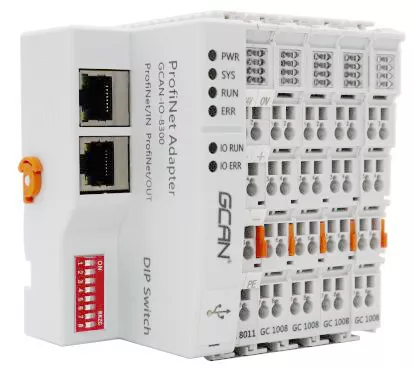Have you ever encountered a situation where a seemingly small error in pin definition halted your GCAN PLC project? As a PLC engineer, I understand the frustration that comes with such issues. In this blog post, we’ll walk through a real-life example of troubleshooting a pin definition error in a GCAN PLC and provide you with practical steps to overcome it effectively.
Let’s dive into the scenario:
Error Message: “Pin Configuration Mismatch – Input pin I/O mismatch for Pin 10.”
Step 1: Identify the Error Message
When you encounter an error message like the one above, it’s crucial to carefully read and understand the information provided. In this case, the error points to a pin configuration mismatch related to Pin 10.
Step 2: Check the Pin Definition
Now, it’s time to examine the pin definitions in your GCAN PLC. Double-check that the pin configurations align with the actual devices connected. Ensure that Pin 10 is correctly defined as an input pin and that its configuration parameters match the intended functionality.
Step 3: Investigate Pin Conflicts
Pin conflicts can often lead to pin definition errors. You may have unintentionally assigned multiple functions or conflicting settings to the same pin. In this situation, review the pin configuration and verify that Pin 10 doesn’t conflict with any other pins or functions within the PLC program.
Step 4: Verify Physical Connections
Sometimes, pin definition errors can stem from incorrect physical connections. Ensure that Pin 10 is properly connected to the corresponding device or circuit. Check the wiring and confirm that the connection is reliable and compliant with the specified standards. Faulty physical connections can cause pin definition errors, so pay close attention to this aspect.
Step 5: Consult Documentation and Resources
If the error persists, consult the documentation and resources provided by the GCAN PLC manufacturer. They often offer comprehensive user manuals, technical specifications, and FAQs that can provide further insights into pin definition errors and their solutions. Refer to these resources to gain a better understanding of the issue and explore potential resolutions.
Step 6: Seek Technical Support
If all else fails, don’t hesitate to seek assistance from the GCAN PLC manufacturer or professional technical support teams. They possess extensive experience and specialized knowledge, enabling them to offer personalized solutions tailored to your specific pin definition error.


By following these steps, you can effectively troubleshoot pin definition errors in your GCAN PLC. Remember that each problem may have unique characteristics, so the solutions may vary. As a PLC engineer, it’s essential to continually learn and accumulate experience to tackle various challenges effectively.
To prevent pin definition errors in your GCAN PLC projects, consider the following tips:
- Thoroughly read the GCAN PLC user manual and technical specifications to understand the requirements for pin definition and configuration.
- Plan your pin definition carefully, checking for any conflicts between pins before proceeding.
- Verify physical connections before finalizing them, ensuring they adhere to proper wiring practices and standards.
- Regularly update the GCAN PLC firmware and software to maintain device stability and functionality.
- Engage in knowledge-sharing with peers and other PLC engineers, exchanging experiences and solutions.
As a PLC engineer, problem-solving is an integral part of our daily work. By understanding the process of troubleshooting pin definition errors in GCAN PLCs and implementing preventive measures, we can enhance our efficiency and the quality of our automation control systems.
I hope this blog post assists PLC engineers in effectively resolving pin definition errors in GCAN PLCs. With the right steps and techniques, you can quickly identify and rectify issues, ensuring the seamless operation of your automation control systems. Wishing you great success in your PLC engineering endeavors!
Looking for a CAN Fiber Optic Gateway for your next project ? Click to learn more!
